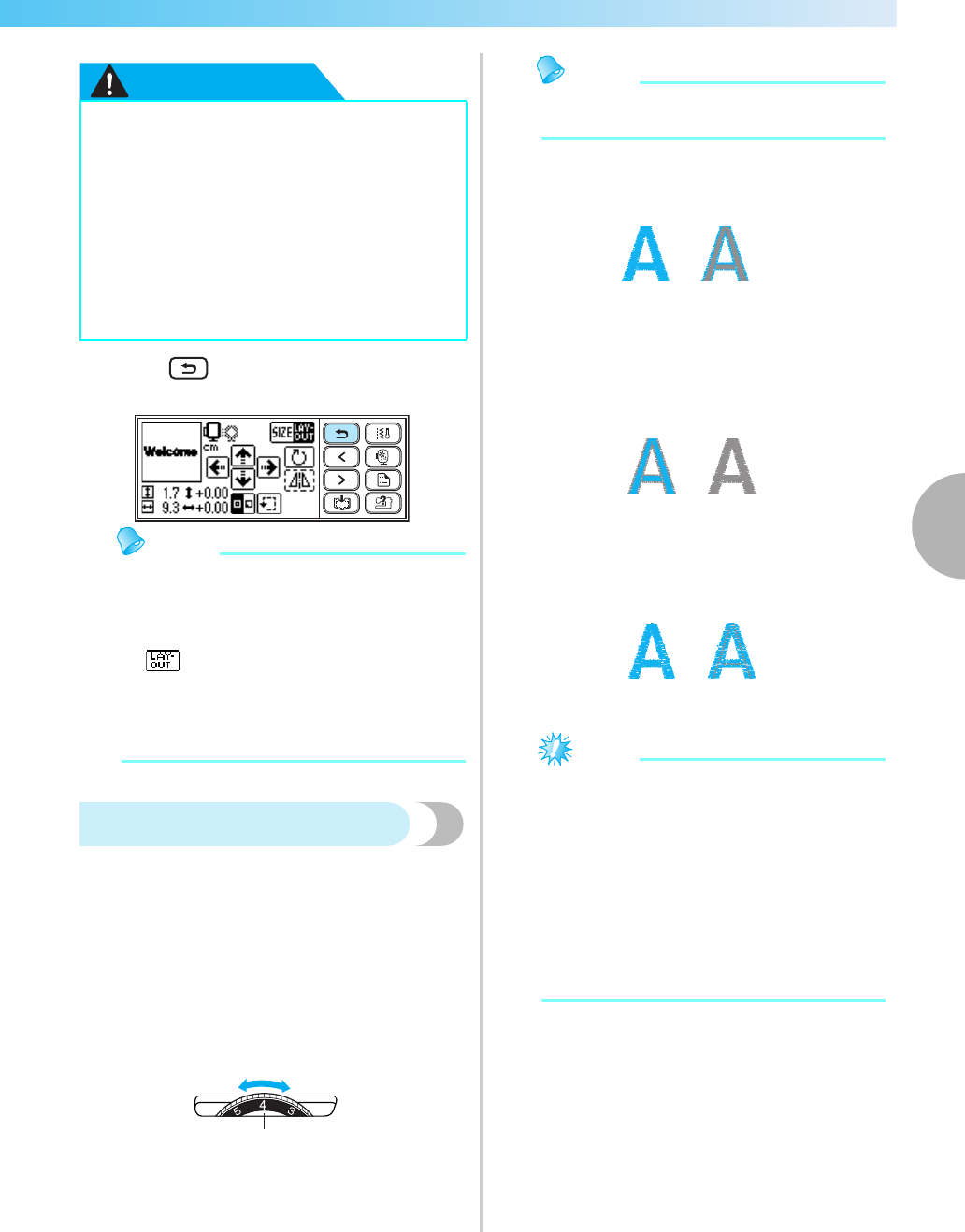
Editing and Saving Patterns 145
4
— — — — — — — — — — — — — — — — — — — — — — — — — — — — — — — — — — — — — — — — — — — — — — — — — — — —
CAUTION
d
Press (Back key) to return to the
previous screen.
Memo
z When the power is turned off, the layout
returns to the original setting.
z You can also check the pattern size and
distance from the center by pressing
after beginning embroidering.
z The embroidery patterns you have edited or
adjusted can be saved in the sewing
machine’s memory. For details, refer to
"Saving patterns" (page 150).
Adjusting the thread tension
If embroidery fails, it is difficult to undo the thread
and the fabric may be damaged.
Before embroidering, use a scrap of the same fabric
to check the adjustment of the thread tension, etc.
The upper thread tension is changed using the thread
tension dial.
When doing machine embroidery, the tension dial
should be set somewhere between 2 to 6.
a Loose (Decrease thread tension)
b Tight (Increase thread tension)
c Upper thread tension dial
Memo
z If the stitches appear loose, turn the tension
up one notch and resew.
■ Correct thread tension
The thread tension is correct when upper thread is
just visible on back of the fabric.
a Right side of fabric
b Wrong side of fabric
■ Upper thread is too tight
The lower thread will be visible on the front of the
fabric. In this instance, decrease the upper thread
tension.
a Right side of fabric
b Wrong side of fabric
■ Upper thread is too loose
The upper thread has slack. In this instance,
increase the upper thread tension.
a Right side of fabric
b Wrong side of fabric
Note
z If the upper thread is not threaded correctly
or the bobbin is not installed correctly, it
may not be possible to set the correct thread
tension. If the correct thread tension cannot
be achieved, rethread the upper thread and
insert the bobbin correctly.
z If the tension dial is set extremely low, the
machine may stop stitching during sewing.
This is not a sign that anything's broken.
Simply increase the tension slightly to
continue sewing.
● Never lower the needle when the
embroidery frame is moving. The needle
may break or bend.
● When you have revised the pattern, check
the display of available embroidery
frames and use an appropriate frame. If
you use an embroidery frame not
displayed as available for use, the presser
foot may strike the frame and possibly
cause injury.
b
a
c
a
b
a
b
a
b


















